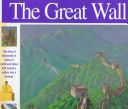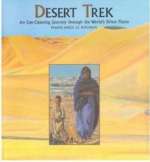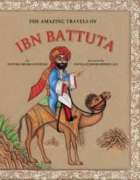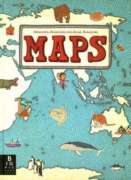
Examines the building of the Great Wall of China and the thousands of years of conflict that preceded it.

Examines the building of the Great Wall of China and the thousands of years of conflict that preceded it.

Take an exotic journey from the American Mojave to the vast Sahara to the high-mountain Gobi and experience the hidden treasures that deserts hold. The people that live there, the plants and animals that thrive, and the riches that lie beneath the ground all contribute to the unique ecosystem that set deserts apart from the rest of the world-seemingly mysterious environments that play a role in the life-cycle of every continent.

“Years before the landmark U.S. Supreme Court ruling Brown v. Board of Education, Sylvia Mendez, an eight-year-old girl of Mexican and Puerto Rican heritage, played an instrumental role in Mendez v. Westminster, the landmark desegregation case of 1946 in California”–

In 1325, when Ibn Battuta was just 21, he bid farewell to his parents in Tangier, Morocco, and embarked on a pilgrimage to Mecca. It was 30 years before he returned home, having seen much of the world. In this book he recalls his amazing journey and the fascinating people, cultures, and places he encountered. He traveled extensively, throughout Islamic lands and beyond — from the Middle East to Africa to Europe to Asia. Ibn Battuta kept a diary of his travels, and even though he lost it many times and had to recall and rewrite what he had seen, he kept a remarkable record of his years away. His meticulous observations, retold here by Fatima Sharafeddine and beautifully illustrated by Intelaq Mohammed Ali, give us a remarkable picture of what it was like to be a traveler nearly 700 years ago.

Provides an illustrated collection of maps covering the continents and major nations of the world, detailing cities, landmarks, and cultural icons for each.

We spend most of our lives in buildings. We make our homes in them. We go to school in them. We work in them. But why and how did people start making buildings? How did they learn to make them stronger, bigger, and more comfortable? Why did they start to decorate them in different ways? From the pyramid erected so that an Egyptian pharaoh would last forever to the dramatic, machine-like Pompidou Center designed by two young architects, Patrick Dillon’s stories of remarkable buildings — and the remarkable people who made them — celebrates the ingenuity of human creation. Stephen Biesty’s extraordinarily detailed illustrations take us inside famous buildings throughout history and demonstrate just how these marvelous structures fit together.
This guide to language takes readers on a trip of the tongue, exploring how languages — spoken, written and sign — originate and change over time.

Since the year 1900, cheetah footprints quickly dwindled in African dirt as the species plummeted from more than 100,000 to fewer than 10,000. At the Cheetah Conservation Fund’s (CCF) African headquarters in Namibia, Laurie Marker and her team save these stunning, swift, and slender creatures from extinction. Since the organization’s start in 1990, they’ve rescued more than 900 cheetahs, most of whom have been returned to the wild.

This book covers such topics as the worm’s habitats (sometimes they live inside other animals), its anatomy (its muscle tube is slimy and gross), and its illustrious history (worms have been on earth for 120 million years). Although silly and off-the-wall, The Worm contains real information that will tie in with curriculum.

D-Day captures the events and the spirit of that day—June 6, 1944—the day that led to the liberation of western Europe from Nazi Germany’s control. They came by sea and by sky to reclaim freedom from the occupying Germans, turning the tide of World War II.